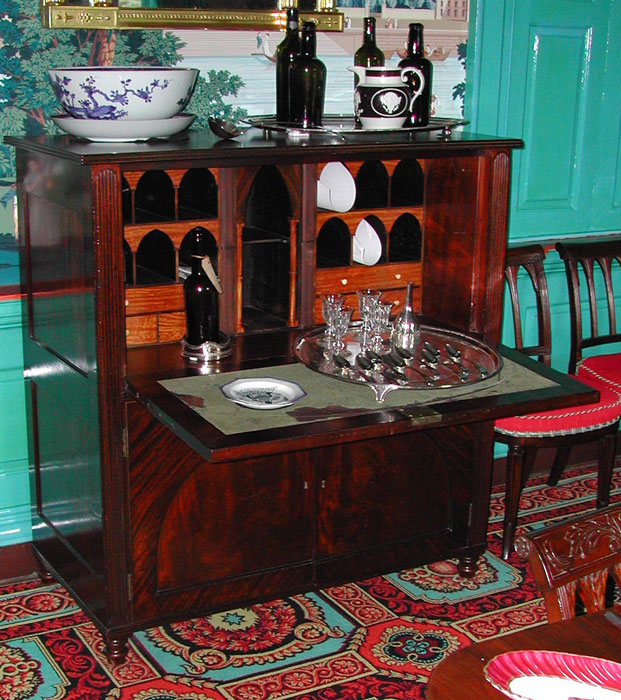Secretary (Secretaire a abbatant)

Late Neoclassical (Empire) style, 1810-1830
Baltimore; attributed to William Camp (fl. 1801-1822)
Desks and secretaries were often used in dining rooms in early 19th century Maryland. The term often used to describe fall front desks of this sort (“butler’s desks”) reflects this usage, as the pieces were used by house servants or the mistress of the house to keep family accounts. The horizontal proportions and use of Gothic arched panels define the distinctive Baltimore type of Late Neoclassical secretary. This piece can be firmly attributed to the shop of William Camp on the basis of its similarity in design and construction to another secretary that is the documented work of that leading cabinetmaker. Gov. Charles Carnan Ridgely, who bought the secretary for Hampton, was known to patronize Camp’s shop from 1808 until 1822.
Mahogany, satinwood, poplar, white pine. H 124, W 116, D 60 cm
Hampton National Historic Site, HAMP 8502
